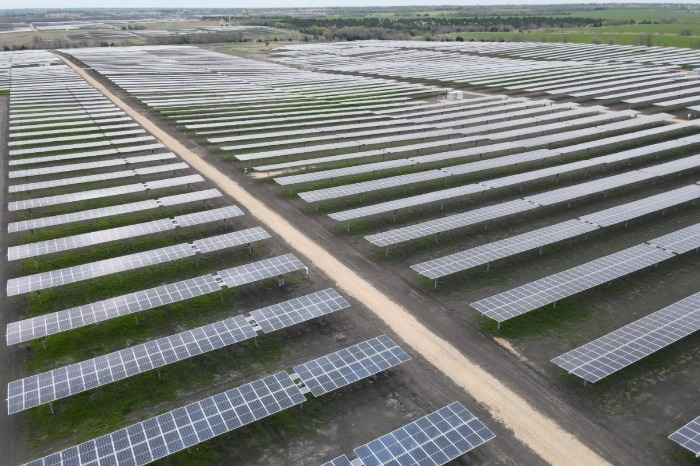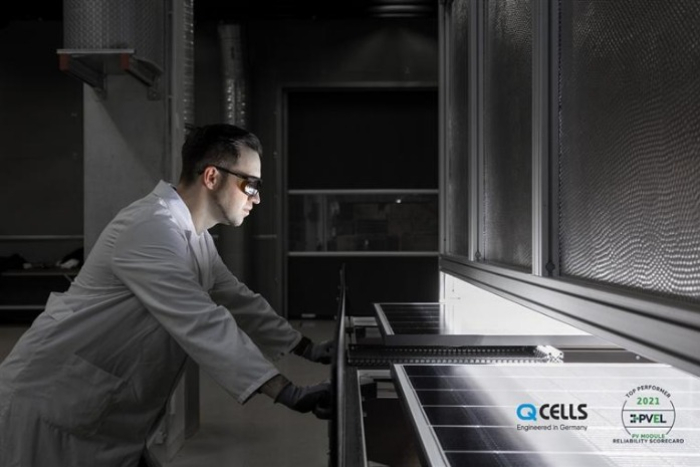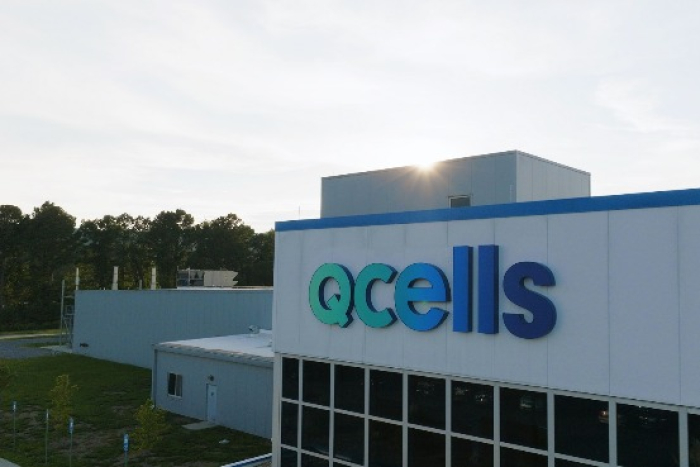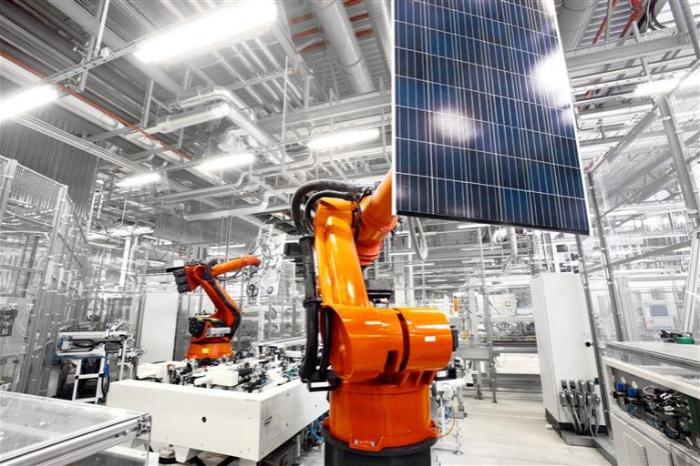Hanwha Q Cells eyes tandem cell mass production in 2027
The S.Korean solar energy company has secured IEC and UL certifications for tandem technology
By 7 HOURS AGO
South Korea’s Rznomics inks $1.3 bn out-licensing deal with Eli Lilly


Korea’s aesthetic medicine enjoys golden era with surge in foreign spending


In China’s waterway city Hangzhou, K-beauty redefines ‘shuiguang'


Kumho Tire shuts Gwangju plant after fire, derailing record sales run


When in S. Korea, it’s a ritual: Foreigners make stops at CU, GS25, 7-Eleven



Hanwha Q Cells Co., the solar panel manufacturing unit of South Korea's Hanwha Solutions Corp., is expected to commercialize tandem modules by 2027, after recently securing international certification, in a move to outpace Chinese rivals in next-generation solar technology.
Qcells North America, the company’s US unit, announced last Wednesday that its tandem modules passed stress tests required for certification from the International Electrotechnical Commission (IEC) and Underwriters Laboratories (UL) – the first such validation in the solar industry.
The modules also met tandem-specific requirements for power measurements, marking a milestone for the new cell type, according to the company.
With the breakthrough, Hanwha Q Cells, known internationally as Qcells, has moved a step closer to mass-producing tandem solar cells, possibly ahead of its competitors, especially those in China.
A GAME CHANGER IN SOLAR TECHNOLOGY
Touted as a game changer in the solar energy industry, tandem technology stacks traditional silicon photovoltaic cells and perovskite cells together, enabling the module to capture a wider range of the solar spectrum than conventional silicon cells and to increase energy efficiency.

The tandem structure delivers up to 50% higher conversion efficiency than standard silicon panels.
A conventional silicon cell’s conversion efficiency plateaus at 25-28%, approaching its theoretical limit of roughly 30%.
Tandem modules, in contrast, have a theoretical ceiling of 44%. Hanwha Q Cells in January said it achieved a world record efficiency of 28.6% on full-area M10-sized perovskite-silicon tandem cells – a standard format in the solar industry.
Perovskite, the lightweight and cost-effective material used in tandem cells, is also more defect-tolerant than silicon, raising expectations for broader adoption and cost reduction in solar energy.
INDUSTRY’S FIRST
With the certifications in hand, Hanwha Q Cells will likely pull ahead of Chinese rivals – LONGi, JinkoSolar and JA Solar – by one to two years in tandem technology, according to industry observers.
“To Qcells’ knowledge, this is the first report of tandem modules passing these stress tests, considering tandem-specific restrictions on power measurement, so this is truly a pivotal moment for tandem solar technology,” Danielle Merfeld, global chief technology officer at Qcells, said in a May 14 press statement.
“Qcells’ breakthrough marks a critical step towards commercial readiness.”

The tested tandem module pairs the company’s proprietary perovskite technology on the top layer with its cost-efficient Q.ANTUM silicon platform on the bottom. The modules were produced at its R&D pilot line in Germany.
Hanwha acquired leading German solar PV developer Qcells in 2012 and in 2015 opened the R&D center in Talheim, where it has been researching tandem technology since then.
MASS PRODUCTION IN 2027
Hanwha Q Cells is said to be targeting the first half of 2027 for mass production of tandem modules, likely beginning at its plant in Jincheon, Korea, and later at its US plant in Cartersville, Georgia for the North America market.
A rollout in Europe is also planned later.

Solar energy market experts forecast that tandem modules will account for 30% of the solar market by 2033, with full adoption likely by 2040.
So far, none of the Chinese solar panel makers have passed IEC and UL’s stress tests for their tandem cells, even though they have announced similar commercialization plans.
As a front-runner in the technology, Hanwha Q Cells aims to rapidly improve its tandem conversion efficiency to near the 44% ceiling to leave Chinese competitors far behind, said an official of the company.
Since 2020, the global solar panel market has been dominated by Chinese companies, largely due to their cheaper alternatives backed by economies of scale.
Write to Sang Hoon Sung and Woo-Sub Kim at uphoon@hankyung.com
Sookyung Seo edited this article.
-
 EnergyHanwha Q Cells, OCI to benefit from expanded US CHIPS Act subsidies
EnergyHanwha Q Cells, OCI to benefit from expanded US CHIPS Act subsidiesOct 31, 2024 (Gmt+09:00)
2 Min read -

-
 EnergyHanwha Q Cells builds US solar farm for power supply to Meta
EnergyHanwha Q Cells builds US solar farm for power supply to MetaMay 30, 2024 (Gmt+09:00)
1 Min read -

-
 EnergyQcells launches commercial operations at new plant in Georgia, US
EnergyQcells launches commercial operations at new plant in Georgia, USMay 07, 2024 (Gmt+09:00)
2 Min read -
 EnergyHanwha Q Cells expects windfall gain from Chinese rivals’ woes
EnergyHanwha Q Cells expects windfall gain from Chinese rivals’ woesAug 21, 2023 (Gmt+09:00)
2 Min read -
 EnergyHanwha Q Cells holds No.1 position in US solar module market
EnergyHanwha Q Cells holds No.1 position in US solar module marketMay 10, 2023 (Gmt+09:00)
1 Min read


